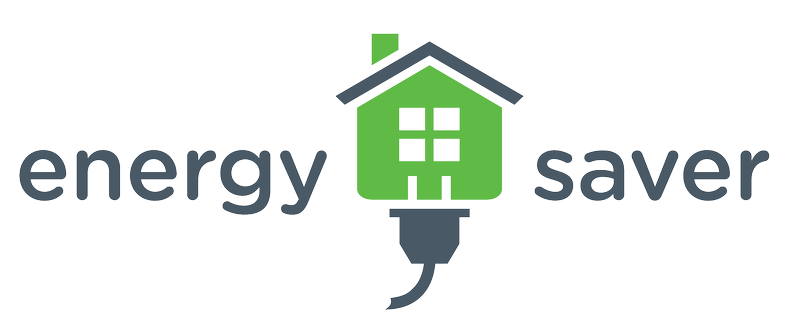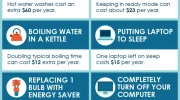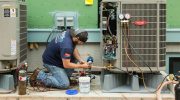
Energy Savings
Are you looking to make a positive impact on the environment while also saving money? Look no further! Our sustainable and renewable energy solutions offer you the perfect opportunity to increase efficiency, promote conservation, and reduce your utility bills.
1. Upgrade to Energy-Efficient Appliances: Investing in appliances with higher energy efficiency ratings can significantly reduce your power consumption and save you money in the long run.
2. Seal Air Leaks: By sealing air leaks in your home, you can prevent drafts, reduce heating and cooling needs, and ultimately decrease your energy usage.
3. Install Programmable Thermostats: A programmable thermostat allows you to set specific temperature ranges for different times of the day, optimizing energy usage and maximizing comfort.
4. Switch to LED Lighting: Replace traditional incandescent bulbs with energy-efficient LED lights to save on energy and enjoy longer-lasting illumination.
5. Use Natural Light: Take advantage of daylight by opening curtains and blinds during the day, reducing the need for artificial lighting.
6. Insulate Your Home: Proper insulation prevents heat from escaping during colder months and keeps your home cooler in the summer, helping you save on heating and cooling expenses.
7. Unplug Unused Electronics: Even when turned off, electronics continue to draw power. Unplug unused devices or use power strips to easily switch them off completely.
8. Reduce Water Usage: Conserving water not only helps the environment but also saves energy, as less water needs to be heated and pumped.
9. Plant Shade Trees: Strategically planting trees around your home can provide natural shade, reducing the need for extra cooling during warmer months.
10. Take Advantage of Solar Power: Consider installing solar panels to harness the power of the sun and generate clean, renewable energy for your home.
By implementing these easy and practical tips, you can actively contribute to a greener planet while enjoying significant energy savings. Start making the change today and be part of the green revolution!
Benefits of saving energy
Saving energy is an important aspect of conservation and sustainability. By reducing our energy consumption, we can contribute to a greener and more efficient world. Here are some benefits of saving energy:
- Cost savings: One of the primary benefits of saving energy is the cost savings it can bring. By using energy-efficient appliances and implementing energy-saving practices, you can significantly reduce your utility bills.
- Environmental impact: Energy conservation helps reduce greenhouse gas emissions and other forms of air pollution. By using less energy, we can help mitigate climate change and protect the environment.
- Renewable energy: Saving energy encourages the development and adoption of renewable energy sources such as solar and wind power. By reducing our reliance on fossil fuels, we can promote a more sustainable and cleaner energy future.
- Efficiency: Energy efficiency is closely linked to saving energy. By using energy-efficient appliances and technologies, we can achieve the same level of performance while consuming less energy.
By embracing energy savings practices, we can make a positive impact on the environment, reduce our utility bills, and contribute to a more sustainable and green future.
Install energy-efficient light bulbs
By installing energy-efficient light bulbs in your home, you can significantly reduce your electricity consumption and save money on your utility bills. Energy-efficient light bulbs use advanced technology to provide the same level of brightness while consuming less energy, compared to traditional incandescent bulbs.
There are two main types of energy-efficient light bulbs:
- Compact Fluorescent Lamps (CFLs): These bulbs use about 75% less energy than incandescent bulbs and can last up to 10 times longer. CFLs are a great option for general lighting needs, such as bedrooms, living rooms, and kitchens.
- Light-Emitting Diodes (LEDs): LEDs are even more energy-efficient than CFLs, using about 80% less energy. They also have a longer lifespan, typically lasting up to 25 times longer than incandescent bulbs. LEDs are suitable for a variety of lighting needs, including task lighting, outdoor lighting, and decorative lighting.
By choosing energy-efficient light bulbs, you contribute to a more sustainable future by reducing your carbon footprint. Additionally, these bulbs produce less heat, helping to keep your home cooler and reducing the load on your cooling system during hot summer months.
While energy-efficient bulbs may initially cost more than traditional bulbs, the long-term savings on your utility bills make them a cost-effective choice. In addition, many energy-efficient bulbs are eligible for rebates and incentives from utility companies and government programs, further offsetting the initial investment.
| Lower energy consumption: Energy-efficient bulbs use less electricity, resulting in lower utility bills. |
| Longer lifespan: Energy-efficient bulbs can last several years, reducing the frequency of bulb replacements. |
| Reduced carbon footprint: By using less energy, energy-efficient bulbs help reduce greenhouse gas emissions and combat climate change. |
| Greater brightness options: Energy-efficient bulbs come in a variety of brightness levels and color temperatures to suit your preferences and needs. |
| Increased safety: Energy-efficient bulbs produce less heat, reducing the risk of burns and fire hazards. |
Make the switch to energy-efficient light bulbs and enjoy the benefits of energy savings, reduced environmental impact, and a greener future.
Types of energy-efficient light bulbs
In today’s world, conservation and sustainability are more important than ever. By choosing energy-efficient light bulbs, you can help reduce your carbon footprint and save money on your utility bills. There are several types of energy-efficient light bulbs available on the market, each offering different benefits in terms of efficiency and power savings. Here are a few options to consider:
- LED Bulbs: LED bulbs are one of the most popular choices for energy-efficient lighting. They are highly efficient and can last up to 25 times longer than traditional incandescent bulbs. LED bulbs also produce less heat, making them a safer option.
- Compact Fluorescent Bulbs (CFL): CFL bulbs use up to 75% less energy than incandescent bulbs and can last up to 10 times longer. They are a great option for general lighting needs and are available in a variety of sizes and shapes.
- Halogen Incandescent Bulbs: Halogen incandescent bulbs are an improved version of traditional incandescent bulbs. They use about 25% less energy and can last up to three times longer.
By switching to energy-efficient light bulbs, you can not only reduce your energy consumption and lower your utility bills, but also contribute to the global effort for renewable and sustainable energy sources. Make the choice today to make a positive impact on the environment and your wallet.
Use natural lighting
One of the most sustainable ways to save power and reduce your utility bills is by harnessing the power of natural lighting. By utilizing the renewable energy source of sunlight, you can make significant savings and contribute to a greener future.
Not only does natural lighting provide a free source of energy, but it also has numerous benefits for your well-being. Studies have shown that exposure to natural light can improve mood, increase productivity, and enhance overall health.
To maximize your energy efficiency and make the most of natural lighting, consider the following tips:
- Keep your curtains and blinds open during the day to allow sunlight in. This can help brighten up your space and reduce the need for artificial lighting.
- Position your furniture strategically, ensuring that it doesn’t block natural light from entering your room.
- Opt for light-colored walls and surfaces, as they reflect sunlight better and distribute it throughout the space.
- Install skylights or solar tubes to bring in even more natural light, especially in areas with limited windows.
- Consider using light shelves or light tubes to redirect and distribute sunlight deeper into your home.
By embracing the power of natural lighting, you can significantly reduce your reliance on artificial lighting and decrease your energy consumption. This not only leads to cost savings but also helps minimize your environmental footprint.
Maximizing natural light in your home
Are you looking for a simple, sustainable way to reduce your energy bills? Consider maximizing the natural light in your home. By harnessing solar power, you can enjoy a brighter, more energy-efficient space while saving money and reducing your carbon footprint.
Here are 10 easy steps to maximize natural light and create a more sustainable home:
- Use lighter paint colors: Light-colored walls reflect more light, helping to brighten the room.
- Keep windows clean: Regularly clean your windows to ensure maximum sunlight enters your home.
- Utilize mirrors: Place mirrors strategically to reflect natural light and create the illusion of a larger space.
- Trim outdoor foliage: Trim trees or bushes that may be blocking sunlight from entering your windows.
- Install skylights: Skylights are a great way to enhance natural light in rooms with limited windows.
- Consider solar tubes: Solar tubes capture and distribute natural light, even in rooms without windows.
- Opt for light-colored window treatments: Choose sheer or light-colored curtains or blinds that allow light to penetrate.
- Remove unnecessary obstructions: Clear the path of furniture or objects that obstruct the flow of natural light.
- Decorate with reflective surfaces: Incorporate furniture or accessories with reflective surfaces, such as glass or metal, to increase light diffusion.
- Upgrade to energy-efficient windows: Install energy-efficient windows that let in more light while keeping your home well-insulated.
By following these tips, you can transform your home into a bright and sustainable space that maximizes natural light. Experience the benefits of increased energy efficiency, savings on utility bills, and a greener lifestyle.
Remember, every small step towards energy efficiency counts for a greener future!
| Energy savings | Reduce your energy usage and lower your utility bills. |
| Sustainable living | Make a positive impact on the environment by using renewable energy sources. |
| Improved well-being | Natural light has been shown to boost mood and enhance productivity. |
| Enhanced aesthetics | Bright, well-lit spaces create a more visually appealing and inviting atmosphere. |
| Increased property value | Maximizing natural light can enhance the value and marketability of your home. |
Unplug unused electronics
One simple and effective way to save energy and reduce your utility bills is by unplugging unused electronics. When electronics are plugged in, they continue to draw power even when they are turned off or in standby mode. This phenomenon is known as “phantom power” or “vampire power.” Unplugging these devices not only saves energy but also helps reduce greenhouse gas emissions and promotes a more sustainable and green lifestyle.
By unplugging unused electronics, you can see significant savings on your power bill. According to the U.S. Department of Energy, the average household can save up to $100 per year by simply unplugging idle devices. These savings can quickly add up over time, allowing you to allocate your funds toward more important things.
Unplugging unused electronics is also an excellent way to promote energy efficiency. Instead of relying on traditional power sources, consider utilizing renewable energy options like solar power. Solar energy is a sustainable and renewable source that can power your home or office while reducing your reliance on fossil fuels. By combining the practice of unplugging unused electronics and harnessing the power of the sun, you can significantly reduce your carbon footprint and contribute to a cleaner environment.
When unplugging electronics, it is essential to be mindful of which devices you unplug. Some devices, like computers and routers, may require regular updates or backup power. It is advisable to use a power strip with an on/off switch that you can easily turn off when these devices are not in use. This way, you can ensure your electronics are properly shut down while saving energy and reducing your utility bills.
The benefits of unplugging unused electronics:
- Saves energy
- Reduces utility bills
- Promotes sustainability
- Helps reduce greenhouse gas emissions
- Encourages a green lifestyle
In conclusion, unplugging unused electronics is a simple and effective way to save energy, reduce your utility bills, and promote a more sustainable and green lifestyle. By adopting this practice and considering alternative energy sources like solar power, we can all contribute to a more energy-efficient and environmentally friendly future.
Energy consumption of idle electronics
Did you know that even when your electronics are not in use, they continue to consume energy? This can result in wasted energy and higher utility bills.
At Sustainable Solutions, we understand the importance of energy efficiency and conservation. That’s why we offer a range of products and services to help you reduce your energy consumption and save money.
With our solar power solutions, you can harness the power of the sun to generate electricity for your idle electronics. By utilizing clean and renewable energy, you not only reduce your carbon footprint but also lower your utility bills.
Our team of experts can assess your energy usage and recommend the most efficient products for your needs. Whether it’s smart power strips that automatically cut off power to idle devices or energy-saving settings for your appliances, we have the solutions to help you save.
By investing in energy-efficient electronics and adopting sustainable practices, you can make a significant impact on the environment. Not only will you reduce your energy consumption, but you will also contribute to creating a greener and healthier planet for future generations.
Join us in our mission to promote green and sustainable living. Contact us today to learn more about our energy-saving products and how they can help you save money while protecting the environment.
Adjust thermostat
One of the easiest ways to save energy and reduce your utility bills is by adjusting your thermostat. By being mindful of the temperature settings in your home, you can make sustainable choices that have a positive impact on the environment.
Here are some tips for adjusting your thermostat:
- During the colder months, set your thermostat to a lower temperature. By lowering the temperature by just a few degrees, you can conserve energy and reduce heating costs.
- During the warmer months, set your thermostat to a higher temperature. By raising the temperature by a few degrees, you can save power and reduce cooling costs.
- Consider using a programmable thermostat. This will allow you to set different temperatures for different times of the day, ensuring that you are only using energy when you need it.
- When you are away from home, adjust your thermostat to a more efficient temperature. There is no need to heat or cool your home when no one is there.
By adjusting your thermostat in a smart and efficient way, you can maximize energy savings while still maintaining a comfortable living environment. This simple step towards conservation and efficiency can make a big difference in reducing your utility bills and promoting a green, renewable future.
Optimal temperature settings
One of the easiest and most effective ways to reduce your energy consumption and save money on your utility bills is by setting your thermostat to optimal temperature settings. By finding the right balance between comfort and conservation, you can achieve a greener and more sustainable lifestyle while still enjoying a comfortable living environment.
Here are some key tips to help you find the optimal temperature settings for energy savings and efficiency:
- Programming your thermostat: Invest in a programmable thermostat that allows you to set different temperatures for different times of the day. This way, you can lower the temperature when you’re away from home or asleep, and raise it when you’re active and need more comfort.
- Turning down the heat: Lowering your thermostat by just a few degrees can result in significant energy savings. Try setting the temperature to around 68°F (20°C) during the day and lower it even further at night or when you’re away.
- Layering up: Instead of relying solely on heating, consider wearing an extra layer of clothing or using blankets to stay warm. This way, you can keep the thermostat lower while still feeling comfortable.
- Utilizing natural sunlight: Open curtains and blinds during the day to allow sunlight to naturally warm up your home. This can help offset the need for heating during daylight hours.
- Sealing air leaks: Inspect your home for any drafts and seal them with weatherstripping or caulking. This will prevent cold air from entering and warm air from escaping, allowing you to maintain a more consistent temperature without overworking your heating system.
- Regular maintenance: Keep your heating system in top shape by scheduling regular maintenance checks. This ensures that it operates at maximum efficiency and reduces the overall energy consumption.
- Consider alternative heating sources: If it’s practical, look into renewable and sustainable heating options such as solar panels, geothermal heat pumps, or high-efficiency wood-burning stoves. These alternatives can further reduce your reliance on traditional power sources.
By implementing these optimal temperature settings and following these energy-saving tips, you can significantly reduce your household’s energy usage and contribute to a greener and more sustainable future.
Insulate your home
When it comes to saving power and increasing the efficiency of your home, proper insulation is key. By insulating your home, you can create a sustainable and energy-efficient environment that promotes conservation and reduces utility bills. Here are some reasons why insulating your home is a smart choice:
- Lower energy consumption: Insulation helps to regulate the temperature inside your home, reducing the need for excessive heating or cooling. This leads to significant energy savings and lower utility bills.
- Solar heat absorption: Insulation can absorb and store solar heat during the day, keeping your home warm during colder nights. This renewable and sustainable approach reduces the reliance on artificial heating methods.
- Improved comfort: Proper insulation creates a more comfortable living environment by reducing drafts, cold spots, and excess heat. Your home will feel cozy and inviting all year round.
- Noise reduction: Insulation also helps to reduce outside noise, creating a quieter and more peaceful atmosphere inside your home.
- Environmentally friendly: Insulating your home is a green choice that contributes to the reduction of greenhouse gas emissions and protects the planet for future generations.
By investing in high-quality insulation, you can enjoy long-term savings on your utility bills while making a positive impact on the environment. Choose sustainable solutions that prioritize energy efficiency and conservation. Insulate your home today and start reaping the benefits!
Importance of insulation
Insulation plays a significant role in reducing power consumption, leading to substantial savings on your utility bills. It is a sustainable energy solution that helps make your home more efficient and green.
When your home is properly insulated, it acts as a protective barrier against the transfer of heat. This means that during the hot summer months, insulation keeps the cool air inside, reducing the need for excessive air conditioning. Similarly, in the winter, insulation helps retain the warmth, reducing the amount of energy needed for heating.
Insulation can be made from different materials, such as renewable resources like recycled fabric, wool, or cotton. Additionally, there are insulation options that incorporate solar panels, allowing you to generate renewable energy while keeping your home energy-efficient.
Proper insulation improves the energy efficiency of your home, which not only saves you money but also reduces your carbon footprint. By minimizing your energy consumption, you contribute to a greener and more sustainable future.
Investing in insulation is an excellent way to make your home more energy-efficient and environmentally friendly. Whether you choose to insulate your walls, floors, attic, or windows, the benefits of insulation are undeniable.
Make the smart choice today and explore the various insulation options available for your home. Start saving energy, reducing your utility bills, and promoting a greener lifestyle.
Use energy-efficient appliances
Sustainable living starts with making smart choices when it comes to your household appliances. By choosing energy-efficient appliances, you can significantly reduce your energy consumption and make a positive impact on the environment.
Energy-efficient appliances are designed to maximize efficiency while minimizing energy usage. These appliances use advanced technology and innovative features to conserve energy, resulting in significant savings on your utility bills.
When shopping for household appliances, look for the ENERGY STAR® label. This label indicates that the appliance meets strict guidelines set by the U.S. Environmental Protection Agency (EPA) for energy efficiency. ENERGY STAR® appliances are built to perform using less energy and reduce greenhouse gas emissions.
Here are some benefits of using energy-efficient appliances:
- Lower utility bills: Energy-efficient appliances consume less energy, resulting in lower electricity bills.
- Reduced environmental impact: By conserving energy, you help reduce greenhouse gas emissions and contribute to a sustainable future.
- Longer lifespan: Energy-efficient appliances are often built with high-quality materials and advanced technology, which can prolong their lifespan compared to conventional appliances.
- Renewable power compatibility: Many energy-efficient appliances are designed to work with solar power or other renewable energy sources, allowing you to further reduce your reliance on traditional electricity.
- Smart features: Energy-efficient appliances often come with smart features such as programmable settings and energy usage monitoring, enabling you to have better control over your energy consumption.
By replacing your old, inefficient appliances with energy-efficient ones, you can make a significant difference in your energy consumption and contribute to a more sustainable future.
Choosing energy-efficient appliances
When it comes to reducing your utility bills and saving energy, one of the most effective steps you can take is choosing energy-efficient appliances. By selecting appliances that are designed to consume less energy, you can make a significant impact on your renewable and green energy savings.
Here are some key reasons why you should consider investing in energy-efficient appliances:
- Lower Power Consumption: Energy-efficient appliances are designed to use less power compared to their conventional counterparts. This can result in substantial cost savings on your utility bills over time.
- Sustainable Energy Use: By opting for energy-efficient appliances, you contribute to sustainable energy consumption, as they require less energy from non-renewable sources.
- Environmental Conservation: Using energy-efficient appliances helps in reducing greenhouse gas emissions and mitigating the impact of climate change.
- Long-Term Savings: While energy-efficient appliances might have a slightly higher purchase price, the long-term savings in energy costs can outweigh the initial investment.
Here are some examples of energy-efficient appliances that you can consider:
| Refrigerator | Improved insulation, energy-saving modes, and efficient compressors |
| Washing Machine | Front-loading models, water-efficient options, and shorter wash cycles |
| Lighting | LED bulbs, motion sensors, and dimmers to control energy usage |
| Air Conditioner | Energy Star-rated models, programmable thermostats, and efficient cooling systems |
By replacing outdated appliances with energy-efficient ones, you can make a positive impact on both your wallet and the environment. So, go ahead and make a sustainable choice by choosing energy-efficient appliances!
Reduce water heating costs
Save money and reduce your carbon footprint with our renewable energy solutions for water heating. By utilizing the power of the sun, our solar water heating systems can provide significant savings on your utility bills.
With a focus on energy conservation and green living, our sustainable water heating solutions offer high efficiency and long-term cost savings. By harnessing the power of solar energy, you can heat your water in a clean and sustainable way.
Our solar water heating systems are designed to maximize efficiency and minimize waste. They work by capturing the heat from the sun and transferring it to your water supply, reducing the need for traditional heating methods.
By investing in a solar water heating system, you not only save money on your utility bills but also contribute to a greener future. Join the movement towards renewable energy and make a positive impact on the environment.
The benefits of solar water heating:
- Significant cost savings on energy bills
- Reduced reliance on non-renewable energy sources
- Lower carbon footprint
- Long-term sustainability
- Increased energy efficiency
Take the first step towards sustainable living and start saving on your water heating costs today. Contact us to learn more about our solar water heating solutions and how they can benefit your home or business.
Tips for reducing water heating expenses
Water heating can account for a significant portion of your utility bills. By implementing these simple tips, you can reduce your water heating expenses and save money:
- Conservation: Practice water conservation by taking shorter showers and only running the dishwasher and washing machine with full loads.
- Efficiency: Install low-flow showerheads and faucet aerators to reduce the amount of hot water used without sacrificing water pressure.
- Solar: Consider installing a solar water heating system, which utilizes renewable energy from the sun to heat water and can provide significant savings.
- Green energy: Choose a water heater that is energy-efficient and has a high Energy Factor (EF) rating. Look for ENERGY STAR certified models for optimal performance.
- Sustainable practices: Use cold water for laundry whenever possible and set your water heater temperature to 120 degrees Fahrenheit to minimize energy consumption.
By implementing these tips, you can reduce your water heating expenses and contribute to a more sustainable and eco-friendly lifestyle. Start saving energy and money today!
Utilize power strips
Sustainable energy savings and efficiency are key for reducing utility bills and promoting renewable energy conservation. One easy way to achieve this is by utilizing power strips in your home or office.
Power strips are a convenient and effective tool for managing your energy usage. By plugging multiple devices into a single power strip, you can easily turn them off when they are not in use, eliminating the energy wasted by devices in standby mode.
Here are a few reasons why utilizing power strips can make a difference:
- Energy savings: Power strips allow you to easily turn off multiple devices with a single switch, reducing your overall energy consumption.
- Convenience: With power strips, you can easily control the power to all of your devices from one central location.
- Protection: Power strips often come with built-in surge protectors, keeping your devices safe from power fluctuations and potential damage.
- Solar power compatibility: If you have renewable energy sources like solar panels, power strips can help you maximize your energy usage by efficiently distributing power to your devices.
| Make sure to choose power strips that are energy-efficient and have a low standby power usage. |
| An energy-efficient power strip with surge protection can save you money and help protect your devices. |
By utilizing power strips, you can easily take control of your energy usage and contribute to a more sustainable future. Start making a difference today!
Benefits of using power strips
Using power strips can have several benefits when it comes to energy efficiency and reducing your utility bills. Here are some of the key advantages:
- Energy conservation: Power strips allow you to easily switch off multiple devices at once, helping you conserve energy and reduce unnecessary power consumption.
- Savings: By turning off devices connected to power strips when not in use, you can save on energy costs and see a noticeable reduction in your utility bills.
- Efficiency: Power strips help streamline the process of powering off multiple devices, making it more convenient and efficient to manage your energy usage.
- Green and sustainable: Using power strips promotes a greener lifestyle by encouraging responsible energy consumption and reducing your carbon footprint.
- Renewable energy compatibility: Some power strips are designed to work seamlessly with renewable energy sources, such as solar panels, allowing you to maximize the benefits of clean energy in your home.
Overall, incorporating power strips into your daily routine can lead to significant energy savings, contribute to a more sustainable future, and help you take control of your energy usage.
Q&A:
What is “10 Easy Ways to Save Energy and Reduce Your Utility Bills”?
“10 Easy Ways to Save Energy and Reduce Your Utility Bills” is a guide or book that provides tips and suggestions on how to save energy and reduce utility bills in a simple and easy way.
Why should I buy “10 Easy Ways to Save Energy and Reduce Your Utility Bills”?
You should buy “10 Easy Ways to Save Energy and Reduce Your Utility Bills” because it offers practical and effective strategies to help you minimize your energy consumption and lower your utility bills. It can save you money in the long run and contribute to a more sustainable environment.
What kind of tips does “10 Easy Ways to Save Energy and Reduce Your Utility Bills” provide?
“10 Easy Ways to Save Energy and Reduce Your Utility Bills” provides a variety of tips such as adjusting thermostat settings, using energy-efficient appliances, properly insulating your home, and adopting energy-saving habits in your daily routines.
Is “10 Easy Ways to Save Energy and Reduce Your Utility Bills” suitable for both homeowners and renters?
Yes, “10 Easy Ways to Save Energy and Reduce Your Utility Bills” is suitable for both homeowners and renters. It offers tips that can be implemented in any living situation to help reduce energy consumption and lower utility bills.
How much can I expect to save on my utility bills by following the tips in “10 Easy Ways to Save Energy and Reduce Your Utility Bills”?
The exact amount you can save on your utility bills will vary depending on your current energy usage and the extent to which you implement the tips provided in the book. However, by following the strategies outlined in “10 Easy Ways to Save Energy and Reduce Your Utility Bills”, you can potentially save a significant amount of money on your monthly utility bills.
What is “10 Easy Ways to Save Energy and Reduce Your Utility Bills” about?
“10 Easy Ways to Save Energy and Reduce Your Utility Bills” is a guidebook that provides simple and effective strategies to help people save energy and lower their utility bills. It offers practical tips and advice on how to reduce energy consumption and make the home more energy-efficient.
Why should I buy “10 Easy Ways to Save Energy and Reduce Your Utility Bills”?
If you are looking to save money on your utility bills and reduce your environmental impact, “10 Easy Ways to Save Energy and Reduce Your Utility Bills” is a great resource for you. It offers valuable information and practical tips that can help you lower your energy consumption and save money in the long run.








